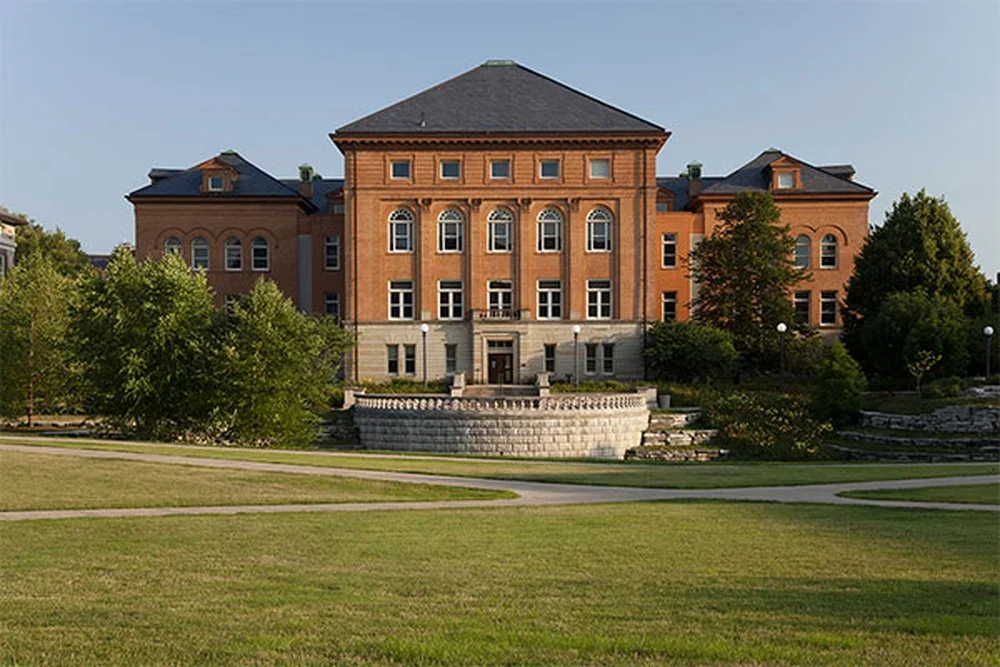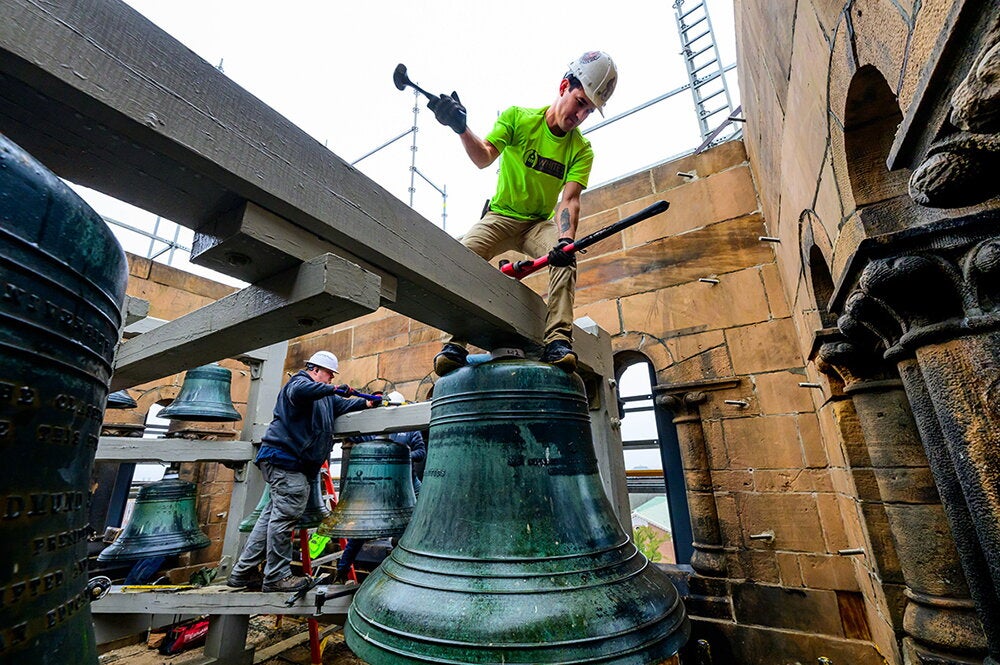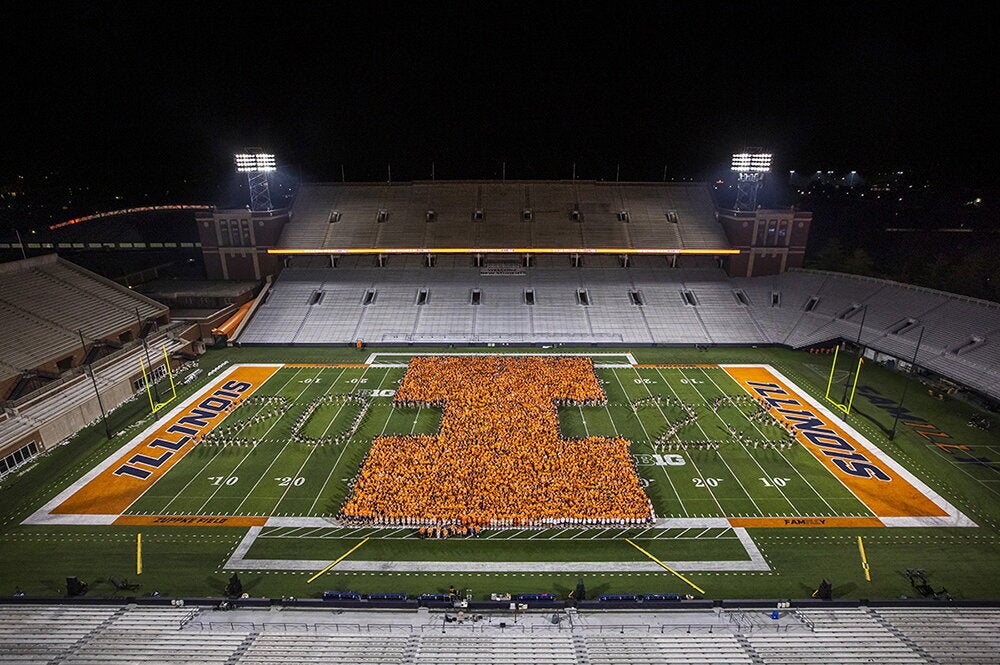

The Quad is regarded as a timeless link between generations of Illinois alumni, but had the late campus cop Peter “Adam” Adams, who officially retired in 1933, appeared today, a lot of sunbathers, Frisbee fans, and free-ranging bicyclists might have an unpleasant lesson in how much the space has changed.
There was a time when nobody was allowed to brandish a cigarette on the Quad, much less dwell upon the grass, without Adams chasing them off with a whistle and cane. For years, only newspaper carriers were allowed to bike on sidewalks, and then only before 8 a.m.
It’s not hard to imagine how Adams and other old-timers might have reacted to Quad Day, or anti-war protests, or the nude parachutists that landed on the Quad in 1974.
Attitudes and decorum are not all that have changed. When Don Molnar came to the University of Illinois as a student in 1956, one of the first things he noticed were towering elm trees on the Quad. “I looked up and the trees were bigger than the buildings, which I had never seen in my life. I wouldn’t have gone anyplace else at that point,” says the landscape architect.
Those elms, planted in the 1890s and which long stood as a stately reminder of campus history, were totally wiped out in 1965 by Dutch elm disease. You wouldn’t know it today, as the University hired a company in the wake of the elm disaster to recreate the Quad’s leafy environment.
The Quad is indeed an anchor across the years, but, contrary to its unchanging image, its story reflects the evolution, tensions, and ideas of the University itself.
A Bold and Controversial Beginning
Had just a couple votes on the Board of Trustees been cast differently in 1869, the Quad as we know it might not even exist today. That year the board chose the site for a pivotal new building—the since-razed University Hall, at the site of the Illini Union—which dictated how the University expanded.
Some preferred the land north of Springfield Avenue, or in the space now taken up by the South Farms. By a narrow vote, the current location of the Illini Union was selected.
The site was criticized for years as its location south of Green Street required the relocation of experimental farms and gardens and stood separated from the rest of the University north of Green. The location, however, created the potential for an iconic space, even though the board didn’t know it. A rapid increase in enrollment at the University in the 1890s brought on a need for more buildings—buildings that would form the beginnings of the Quad.
In 1891, the Natural History Building was the first to be added. By 1917, most of the buildings that now shape the Quad had been built.
The Lucky Accident
While the Quad appears to be the product of careful planning, it has in fact been labeled a “lucky accident” by historians.
Some say the Quad was inspired by the Quad at Harvard University, but no records have been found indicating as such. The space started taking shape near the turn of the 20th century, when President Andrew Draper requested that a group of buildings be placed southeast of University Hall.
The Agriculture Building (now Davenport Hall), Chemistry Building (now Noyes Laboratory), and Women’s Building (now English Building) formed early, uniform sides of the Quad. But Leon Deming and Thomas O’Donnell asserted in their 1930 history of the University that they weren’t built with a Quad in mind.
It wasn’t until 1906, as University architect C.H. Blackall puzzled over the location of the new Auditorium (now Foellinger Auditorium), that the Quad was first put on paper.
Blackall’s 1906 plan inspired a flurry of various campus studies in subsequent years that centered on the idea of an open space surrounded by buildings.
And while early campus officials may not have envisioned a Quad, they certainly saw the value in open space and greenery.
“It is the pride of the University that our grounds are roomy with ample space between buildings for extensive avenues, walks, greenward, shrubbery, and spreading trees,” said Board of Trustees member Samuel Bullard, in 1903, before the Quad took shape. “Those conditions give a charm to the work of the student and inspire and develop the best feelings of his higher nature.”
Stephen Sears, U of I assistant professor in the Department of Landscape Architecture, says this is still a common view toward campuses nationwide.
“Grass and lawn has a very deep-seeded perception in the United States as an appropriate, well-kept open space,” he says. “It is maintained that way to accommodate an academic environment.”
Looking Forward
Modern concerns are increasingly in conflict with large spaces on campus, even as they’re still revered. Campus quadrangles run against an increasing concern for sustainable environments, for example, as their current design requires a lot of maintenance.
So far, rather than replacing or drastically altering their open space, universities have been focusing on more progressive maintenance techniques to solve the problem of sustainability, Sears says.
Spaces like the Quad are also jeopardized by aging buildings. During the ongoing renovation of Lincoln Hall, workers used a new technique of re-lining storm sanitary sewers rather than digging trenches in the Quad to remove them. Heavy cranes were positioned so they weren’t parked on the Quad lawns.
It begs the question, however, of how long people will take such steps to preserve such open space.
“As long as that landscape is the people’s perception of the highest and best use, [the Quad as it appears today] will remain,” Sears says. “If people valued agriculture in an aesthetic way, we would plant corn on campus. But that’s really not what people’s perception of an appropriate environment for academic buildings is right now.”
Corn on the Quad? It sounds funny today, but old Adams never saw skateboarders coming, either.


